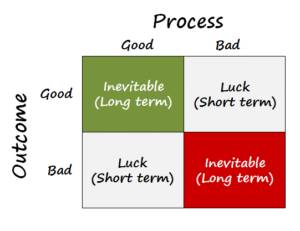What is the goal of the CIU system?
The CIU system of continuous improvement (CI) is designed to help you achieve the goals below:
- Highest Quality
- Shortest Processing Time
- Lowest Cost
Each of the four fundamental principles you will learn below are designed to help you be more successful by improving the quality of your work. Quality is always the first and most important goal of CI. Improvements in time or cost are never made at the expense of quality. Second, CI is designed to help you improve your speed of execution. Faster service will make your customers happier. Lastly, CI will help you find ways to lower cost for doing your work. Success can be achieved when you balance all three: quality service, shorter processing time and lower costs than your competition. These three goals are often referred to as Quality, Delivery and Cost (QDC).
What are the four fundamentals of CI?
1) Focus on process flow and customer value
Every service provided and every product created is the output of processes designed to create value for a customer. A good process will result in a good output, or good products and services. A bad process will result in a bad output, or bad products and services. It is thus very important that you begin to think about your work and everything you do in terms of processes and how they flow. Do your own processes flow smoothly and have they been designed to consistently deliver exceptional quality for your customer? Or do you have a clunky process that can sometimes lead to quality problems? To begin applying the fundamentals, start by thinking with a “focus on process flow” and “customer value” mindset.

2) Standard work creates stability and improves quality
The foundation of achieving QDC is in creating stability in the work flow of your processes. Stability is best achieved by the implementation of standard work and kaizen.
In simple terms, standard work are documented steps one needs to take in order to complete a process. If you do not have the right process steps in place, then it will be difficult to deliver high quality on a consistent basis. Standard work helps to create habits and routine which bring stability to the process. It also becomes a first place to look for the root causes of defects and repair them. You will learn more about standard work, as well as a great technique to help build standard work called five S, as you take additional courses.

3) Build Quality into your processes at the source
In order to achieve the highest levels of consistent quality, it must be built into the steps of your process- which is the true source of quality. As you continue to learn about CI, you will learn ways to prevent low quality inputs from entering your process and how to ensure that no bad quality outputs are passed onto to the next process or even the customer.
4) Remove waste and improve the process through kaizen
Once you have established standard work to bring stability, kaizen is the means by which you make improvements to your processes in an organized, methodical way. Through the ten step process of kaizen, you can make improvements to help you eliminate the seven wastes and improve quality, delivery, and cost. The newly improved processes then become the new documented standard work. You will learn more about the seven wastes and kaizen as you take additional CI courses.
